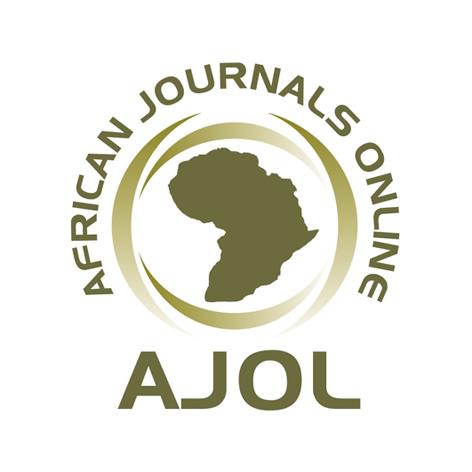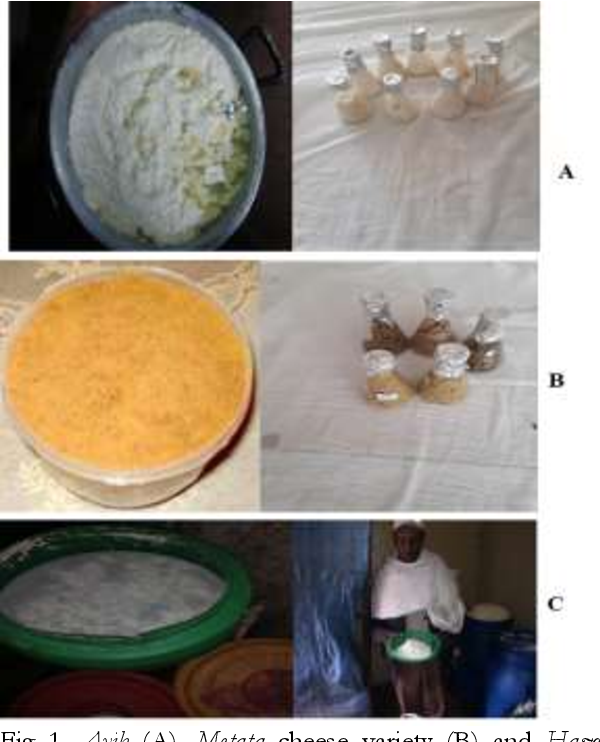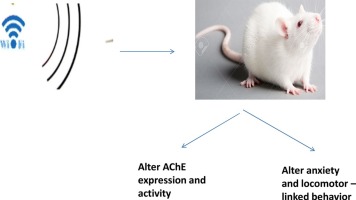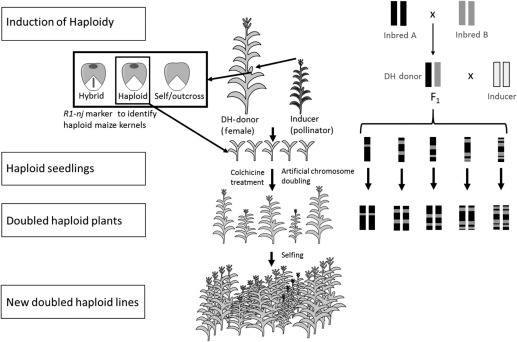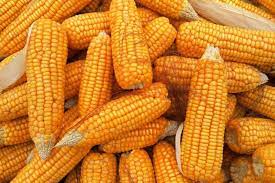Integrated Use of Farmyard Manure and NPS Influenced Soil Chemical Properties, Yield and Yield Attributes of Sorghum (Sorghum bicolor L.) in Assosa District, Western Ethiopia
Downloads
Background: Sorghum is the staple food crop in Assosa area and most important cereal crop next to teff and maize in Ethiopia. However, sorghum productivity is constrained by lack of improved agronomic practices, low soil fertility and associated low soil nutrient availability especially Nitrogen and Phosphorous deficiency and lack of integrated use of nutrient management practices.
Objective: The objective of this study was to increase sorghum production and productivity by optimizing integrated use of blended NPS +N and FYM fertilizers in Assosa district, Western Ethiopia.
Materials and Methods: The treatments consisted of four rates of FYM (0, 5, 10, and 15 t ha–1) and four rates of NPS (having 19N:38P:7S nutrient ratios) applied at the levels of 0, 50, 100 and 150% ha–1 along with N 46 kg ha–1. The experiment was laid out as a completely randomized block design in a factorial arrangement and replicated three times. The experiment was conducted for a period of two years, from 2020 to 2022. Data were collected on soil chemical properties and crop yield and yield attributes.
Results: The results showed that the main effect of FYM and NPS significantly (P < 0.01) affected leaf area index, thousand seed weight and grain yield of sorghum. The integrated use of FYM and NPS significantly (P < 0.05) affected leaf area index, thousand seed weight, grain, and biomass and harvest index of sorghum. The soil pH (5.52 to 5.63), organic carbon (1.57 to 1.93%) and CEC (25 to 31.08 cmol(+) kg–1) were improved in response to the application of 15 t FYM ha–1, whereas some improvement of total nitrogen (0.15 to 0.18%) and available phosphorous (3.32 to 9.64 mg P kg–1) in response to the application of 150% NPS ha–1 + 46 kg N ha–1. The integrated use of 15 t FYM ha–1 and 150% NPS ha–1+ N 46 kg ha–1 resulted in the best improvement of soil organic carbon (0.85% to 2.95%, total nitrogen (0.15 % to 0.20%), available P (3.26 to 10.03 mg P kg–1) and CEC (18.2 to 36.92 cmol(+) kg–1). However, the highest soil pH (5.88) value was recorded in response to the integrated use of 10 t FYM ha–1and 150% NPS ha–1+ N 46 kg ha–1. The highest grain yield (3.98 t ha–1) was obtained from the integrated use of 10 t FYM ha–1 and 150% NPS ha–1 + N 46 kg ha–1. The highest biological yield (5.09 t ha–1) obtained from the integrated use of 15 t FYM ha–1and 150% NPS ha–1 + N 46 kg ha–1. However, the lowest grain yield (0.63 t ha–1) and biological yield (1.07 t ha–1) recorded from the non-treated plots respectively. This implies that the grain yield was increased over by 84.2% and biological yield by 78.9% respectively when compared to the control. Economic analysis also indicated that the application of 10 t farmyard manure ha–1and 150% NPS ha–1 + N 46 kg ha–1 was provided the highest gross and net benefit.
Conclusion: It is concluded that the application of 10 t FYM ha–1and 150% NPS ha–1 + N 46 kg ha–1 resulted in the most economical yield and improved soil chemical properties, particularly soil organic carbon and available phosphorous. The highest mean net benefit (24, 640.14 ETB ha–1) was obtained from the application of 10 t FYM ha–1 and 150% NPS ha–1 + N 46 kg ha–1. This implies that combined applying of farmyard manure and mineral fertilizers at the above mentioned rates enhances the grain yield of sorghum accompanied enhanced contents of soil organic carbon and total nitrogen for sustainable production of the crop.
Amma, M. 2003. Plant and soil analysis. Pp. 125-129. In: Jasiwal, P. (ed.), Soil plant and water analysis. Kalyani Publishing, New Delhi.
Assosa Agricultural Research Center (AARC). 2017. Annual report. Assosa Agricultural Research Center, Assosa, Ethiopia.
Azrag, A. and Dagash, Y. 2015. Effect of sowing date and nitrogen rate on growth, yield components of sorghum ( Sorghum bicolor L .) and nitrogen use efficiency. Journal of Progressive Research in Biology, 2(2): 78–87.
Biya Muhidin. 2018. Determination of nitrogen and phosherous fertilizer requirement for sorghum (Sorghum bicolor L .) production in Kersa-Jimma Zone of Ethiopia. East Africa.Journal of Biology, Agriculture and Health Care, 8(7): 14–22.
Bodena Guddisa, Kebeda Desalegn, Chemeda Birhanu, Gudeta Bedada and Girma Chemeda. 2021. Effect of NPS and nitrogen fertilizer rate on yield and yield components of sorghum in Western Oromia, Ethiopia. International Journal of Agriculture, Forestry and Fisheries, 9(2): 12–16.
Berhane Shibabaw, Ketema Belete and Taye Tegegn, 2015. Effect of cowpea density and nitrogen fertilizer on a sorghum-cowpea intercropping system in Kobo, Northern Ethiopia. International Journal of Agriculture and Forest, 5: 305–317.
CSA (Central Statistical Agency). 2020. Agricultural sample survey report on area and production of major crops (Private peasant holdings „meher‟ season): Statistical Bulletin 585. Addis Ababa, Ethiopia.
CIMMYT (International Maize and Wheat Improvement Center). 1988. From agronomic data to farmer recommendations: An economic work book. CIMMYT, Mexico.
Cui, S., Zhu, X. and Cao, G. 2022. Effects of tillage on soil nitrogen and its components from rice-wheat fields in subtropical regions of China. International Journal of Agriculture and Biological Engineering, 15(3): 146–152.
Dagne Chimdesa. 2016. Blended fertilizers effects on maize yield and yield components of Western Oromia, Ethiopia. Agriculture and Forest Fish, 5: 151–162.
Daniel Hailu and Rozina Gidey. 2022. Yield trends and yield gap analysis of cereal crops in Ethiopia: Implications for research and policy. International Journal of Agricultural Economics, 7(5): 222–226.
Deekshitha, D.K.D., Babu, P.R. and Madhuvani, P. 2017. Effect of fertilizer levels and sulphur on soil properties in clay loam soil. Plant Archives, 17(2): 846–850.
Elamin, A.Y. and Madhavi, K. 2015. Influence of integrated nutrient management on growth and yield parameters of kharif sorghum (Sorghum bicolor L. Moench). American Journal Scientific and Industrial Research, 6: 90–96.
EthioSIS (Ethiopian Soil Information System). 2014. Soil fertility status and fertilizer recommendation atlas for Tigray regional state, Ethiopia. Addis Ababa, Ethiopia.
FAO (Food and Agricultural Organization). 2022. World Food and Agricultural - Statistical Yearbook 2022. Rome, Italy. Available at https:doi.org/10.4060/cc2211en.
Fisher, A.R. 1935. The design of experiments. Oliver and Boyd, Edinburgh. Pp. 256.
Gebremeskel Gebrekorkos, Yemane G. Egziabher and Solomon Habtu. 2017. Response of sorghum varieties to blended fertilizer on yield, yield component and nutritional content under irrigation in Raya Valley, Northern Ethiopia. International Journal of Agriculture and Bioloscience, 6(3): 153–162.
Gebreyesus Brhane. 2012. Effect of tillage and fertilizer practices on sorghum production in Abergelle Area, Northern Ethiopia. Journal of Science, 4(2): 52–69.
Getahun Dereje, Tesfa Bogale, Cherukuri,V., Bogale Walelegn and Arvind, B. 2016. On-farm productivity response of rainfed grain sorghum (Sorghum bicolor L.) to integrated nutrient supply system in Assosa Zone, Western Ethiopia, East Africa. International Journal of Life Sciences, 4(2): 169–175.
Hazelton, P. and Murphy, B. 2007. Interpreting soil test results (What do all the numbers mean?). CSIRO Publishing, Australia.
Hazelton, P. and Murphy, B. 1991. Classifications, Ratings, and critical and toxicity levels of some soil constituent: Collected from différent sources.
Hui, L.I., Wen-ting, F., Xin-hua, H.E., Ping, Z.H.U. and Hong-Jun, G.A.O. 2017. Chemical fertilizers could be completely replaced by manure to maintain high maize yield and soil organic carbon in Northeast China Plain. Journal of Integrative Agriculture, 16(4): 937–946.
Jackson, M.L. 2003. Soil chemical analysis. Pp. 106–120. In: Jasiwal, P. (ed.), Soil, plant and water analysis. Kalyani Publishers, New Delhi.
Kinfe Hailegebrial and Tesfaye Adane. 2018. Yield Performance and adoption of released sorghum varieties in Ethiopia. Edelweiss Applied Science and Technology, 2(1): 46–55.
Kisinyo, P.O., Gudu, S.O. and Opala, P.A. 2019. Response of sorghum (Sorghum bicolor L.) and chemical characteristics of soil to organic and inorganic fertilizers on Kenyan lower midlands acid soil. International Journal of Plant & Soil Science, 28(1): 1–8.
Kumar, B.M., Labanya, R. and Joshi, H.C. 2019. Influence of long-term chemical fertilizers and organic manures on soil fertility. A Review. Universal Journal of Agricultural Research, 7(5): 177–188.
Muhammad, I., Muhammad, J.K., Amjad, A., Amanullah, J. and Sajida, P. 2015. Effect of phosphorus and sulfur on the yield and nutrient uptake of maize. International Journal of Farming and Allied Sciences, 4(3): 244–252.
Nebyou Masebo and Muluneh Menamo. 2016. The effect of application of different rate of N-P fertilizers rate on yield and yield components of sorghum (Sorghum bicolor). Journal of Natural Sciences Research, 6(5): 88–94.
Nikus, O., Turk, M.A. and Al-Tawaha, A.M. 2004. Yield response of sorghum (Sorghum bicolor L.) to manure supplemented with phosphate fertilizer under semi-arid Mediterranean conditions. International Journal of Agriculture and Biology, 6(5): 889–893.
Okalebo, J.R., Gathua, K.W. and Woomer, P. L. 2002. Laboratory Methods of Plant and Soil Analysis: A Working Manual. 2nd edition. TSBFUNESCO, Nairobi, Kenya.
Onyari, C., Kibe, A. and Mwonga, S. 2015. Growth parameters of DK8031 maize variety as affected by varying irrigation and nitrogen fertilizer rates in embu county, Kenya. Journal of Environmental Science and Engineening, 4(1): 432–444.
Robe Elemawako and Sisay Negash. 2021. Evaluation of different blended fertilizer type on yield and yield components of sorghum crop at Fadis District of East Hararghe Zone.International Journal of Current Research and Academic Review, 9(4): 30–38.
Roobroeck, D., Van Asten, P., Jama, B., Harawa, R. and Vanlauwe, B. 2015. Integrated soil fertility management: Contributions of framework and practices to climate-smart agriculture. Copenhagen, Denmark.
SAS (Statistical Analysis of Software). 2016. Institute, “SAS Version 9. 4 ©2002-2003,” SAS Institute, Inc., Cary.
Shamme, S.K., Raghavaiah, C.V., Tesfaye Balemi and Hamza, I. 2016. Sorghum (Sorghum bicolor L .) growth , productivity , nitrogen removal , N-use efficiencies and economics in relation to genotypes and nitrogen nutrition in Kellem Wollega Zone of Ethiopia, East Africa. Advances in Crop Science and Technology, 4(3): 3–10.
Sher, A., Adnan, M., Sattar, A., Ul-Allah, S. and Ijaz, M. 2022. Combined application of organic and inorganic amendments improved the yield and nutritional quality of forage sorghum. Agronomy. https:// doi.org/10.3390/agronomy12040896.
Shiferaw Nesgea, Heluf Gebrekidan, Sharma, J.J. and Tareke Berhe. 2012. Effects of nitrogen and phosphorus fertilizer application on yield attributes, grain yield and quality of rain fed rice (NERICA-3) in Gambella, Southwestern Ethiopia. East African Journal of Sciences, 6(2): 91–104.
Shuaibu, Y.M., Bala, R.A., Kawure, S. and Shuaibu, Z. 2018. Effect of organic and inorganic fertilizer on the growth and yield of sorghum (Sorghum bicolor L. Moench) in Bauchi state, Nigeria. GSC Biological and Pharmaceutical Sciences, 2(1): 025–031.
Tekalign Mamo and Haque, I. 1991. Phosphorus status of some Ethiopian soils. III. Evaluation of soil test methods for available phosphorus. Tropical Agriculture (Trinidad), 68: 51–56.
Tellen, V.A. and Yerima, B.P.K. 2018. Effects of land use change on soil physicochemical properties in selected areas in the North West region of Cameroon. Environmental Systems Research, 7(1): 1–29.
Tilahun Tadesse, Nigussie Dechassa, Wondimu Bayu and Setegn Gebeyehu. 2013. Effects of farmyard manure and inorganic fertilizer application on soil physico-chemical properties and nutrient balance in rain-fed lowland rice ecosystem. American Journal of Plant Sciences, 4(1): 309–316.
Tunya, B.A., Lelei, J.J., Ouma, J.P. and Onwonga, R.N. 2014. Changes in soil chemical properties in response to application of phosphorus sources in legume sorghum cropping systems. Journal of Agriculture and Environmental Sciences, 3(4): 151–168.
Valentinuz, O.R. and Tollenaar, M. 2006. Effect of genotype, nitrogen, plant density, and row spacing on the area-per-leaf profile in maize. Agronomy Journal, 98(1): 94–99.
Walkley, A. 2003. Critical examination of rapid method for determining organic carbon in soils: Effect of variation in digestion conditions and of organic soil constituents. Pp. 72–82. In: Jaiswal, P. (ed.). Soil, plant and water analysis.
Weldegebriel Redai, Araya Tesfay and Gebre Egziabher Yemane. 2018. Effect of NPK and blended fertilizer application on yield, yield component and its profitability of sorghum varieties under rainfed condition in north western Tigray. Life Sciences, 6(1): 60–68.
Yalemtesfa Firew and Asfaw Adugna. 2017. Participatory varietal selection of intermediate altitude sorghum (Sorghum bicolor L. Moench) genotypes in Western part of Ethiopia. African Journal of Plant Science, 11(3): 48–53.
Zerssa, G.W., Kim, D.G., Koal, P. and Eichler-Löbermann, B. 2021. Combination of compost and mineral fertilizers as an option for enhancing maize yields and mitigating greenhouse gas emissions from a Nitisol in Ethiopia. Agronomy, 11: 11–20.
Copyright (c) 2023 Tefera Teshome, Yibekal Alemayehu, Alemayehu Regasa

This work is licensed under a Creative Commons Attribution-NoDerivatives 4.0 International License.
- I am authorized by my co-authors to enter into these arrangements.
- I warrant, on behalf of myself and my co-authors, that:
- the article is original, has not been formally published in any other peer-reviewed journal, is not under consideration by any other journal and does not infringe any existing copyright or any other third party rights;
- I am/we are the sole author(s) of the article and have full authority to enter into this agreement and in granting rights to Springer are not in breach of any other obligation;
- the article contains nothing that is unlawful, libellous, or which would, if published, constitute a breach of contract or of confidence or of commitment given to secrecy;
- I/we have taken due care to ensure the integrity of the article. To my/our - and currently accepted scientific - knowledge all statements contained in it purporting to be facts are true and any formula or instruction contained in the article will not, if followed accurately, cause any injury, illness or damage to the user.
- I, and all co-authors, agree that the article, if editorially accepted for publication, shall be licensed under the Creative Commons Attribution License 4.0. If the law requires that the article be published in the public domain, I/we will notify Springer at the time of submission, and in such cases the article shall be released under the Creative Commons 1.0 Public Domain Dedication waiver. For the avoidance of doubt it is stated that sections 1 and 2 of this license agreement shall apply and prevail regardless of whether the article is published under Creative Commons Attribution License 4.0 or the Creative Commons 1.0 Public Domain Dedication waiver.
- I, and all co-authors, agree that, if the article is editorially accepted for publication in Haramaya Journals, data included in the article shall be made available under the Creative Commons 1.0 Public Domain Dedication waiver, unless otherwise stated. For the avoidance of doubt it is stated that sections 1, 2, and 3 of this license agreement shall apply and prevail.





